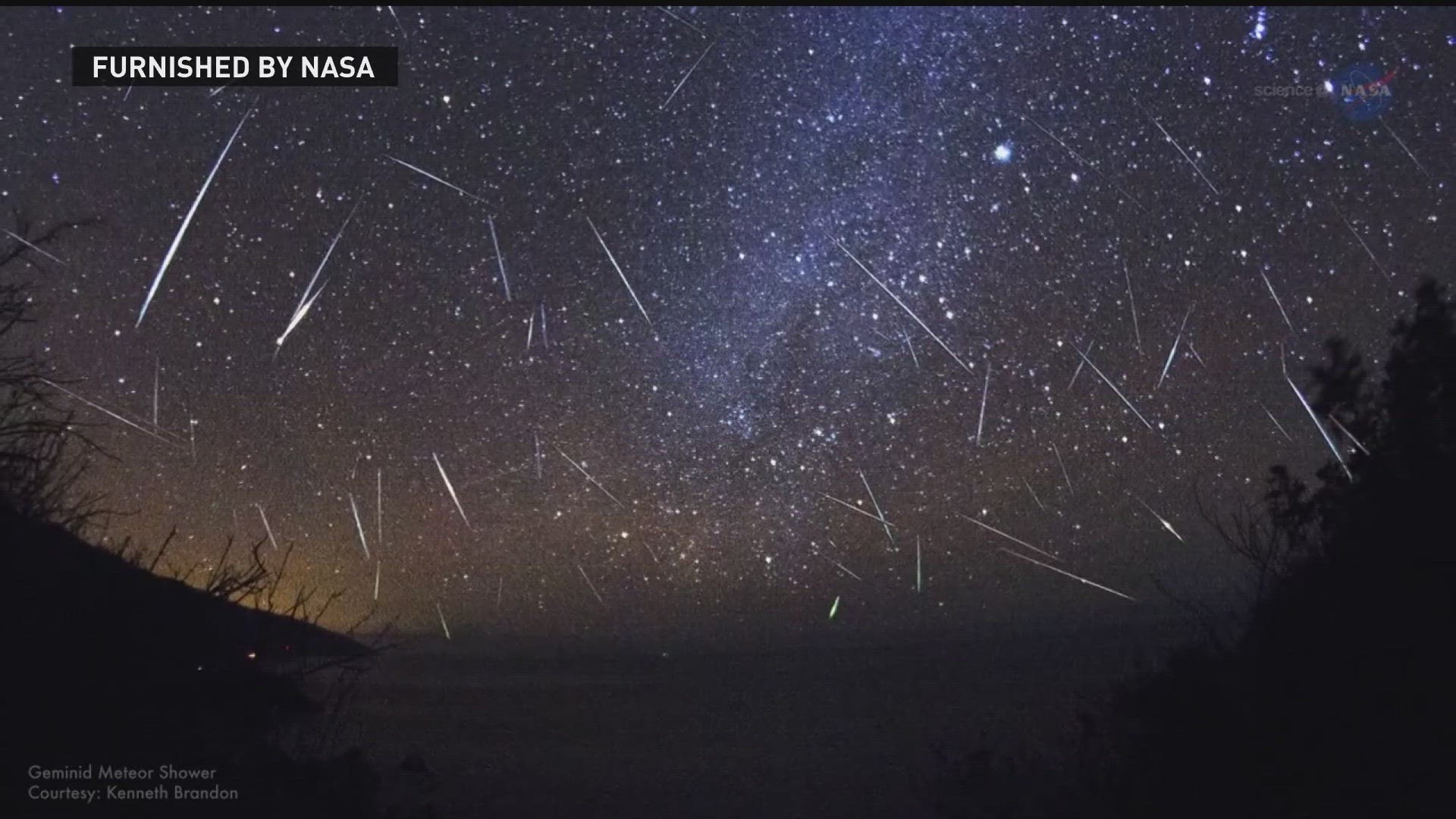1. What is a meteor shower?
A meteor shower is a celestial event in which a number of meteors are observed to radiate, or originate, from one point in the night sky. These meteors are caused by streams of cosmic debris called meteoroids entering Earth’s atmosphere at extremely high speeds on parallel trajectories. Most meteors are smaller than a grain of sand, so almost all of them disintegrate and never hit the Earth’s surface. Nevertheless, each meteoroid that survives the journey through the atmosphere can create a vivid streak of light in the sky, commonly known as a shooting star or falling star.
The most popular meteor shower is the Perseids, which peak in August. The Perseids are so named because the point from which they appear to radiate lies in the constellation Perseus. Other notable showers include the Leonids, which peak in November and are associated with the constellation Leo, and the Geminids, which peak in December and are associated with the constellation Gemini.
Meteor showers are best observed in the early morning hours when the sky is dark and the shower’s radiant point is high overhead. A reclining lawn chair or blanket can make the experience more comfortable. It’s also helpful to have a friend with you, as it can be more enjoyable to share the experience.
2. When is the best time to see a meteor shower?
The best time to see a meteor shower is typically when the shower is at its peak. However, this can vary depending on a number of factors, including the time of year and the location of the shower.
For example, the Perseid meteor shower usually peaks around August 10-12 each year. However, in 2019, the shower is expected to peak around August 11-13. This is because the shower will be more active than usual due to the Earth passing through a denser portion of the comet’s debris field.
Similarly, the Leonid meteor shower typically peaks around November 17-18 each year. However, in 2020, the shower is expected to peak around November 16-17. This is because the shower will be more active than usual due to the Earth passing through a denser portion of the comet’s debris field.
Finally, the Geminid meteor shower usually peaks around December 13-14 each year. However, in 2021, the shower is expected to peak around December 13-14. This is because the shower will be more active than usual due to the Earth passing through a denser portion of the comet’s debris field.
So, while the best time to see a meteor shower is typically when the shower is at its peak, this can vary depending on a number of factors. If you want to see a particular meteor shower, be sure to check the expected peak date and time, as well as the location of the shower, to ensure that you don’t miss it.
3. How can I see a meteor shower?
A meteor shower is a celestial event in which a number of meteors appear in the night sky at the same time. Meteor showers are usually caused by debris from comets or asteroids.
The most famous meteor shower is the Perseids, which occurs every August. The Perseids are caused by the debris from the comet 109P/Swift-Tuttle.
Other well-known meteor showers include the Leonids (caused by the debris from comet 55P/Tempel-Tuttle) and the Geminids (caused by the debris from asteroid 3200 Phaethon).
Meteor showers are best seen in the early morning hours when the sky is dark and the meteorites are visible against the dark background.
4. What causes a meteor shower?
A meteor shower is caused when a comet or asteroid passes close to the sun, causing debris to break off. This debris then enters the earth’s atmosphere, where it burns up, creating the streaks of light that we see as a meteor shower.
The most famous meteor shower is the Perseids, which is caused by debris from the comet Swift-Tuttle. The Perseids typically peak in August and can produce up to 100 meteors per hour.
